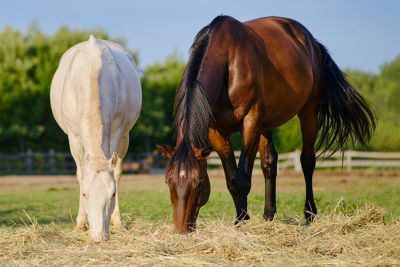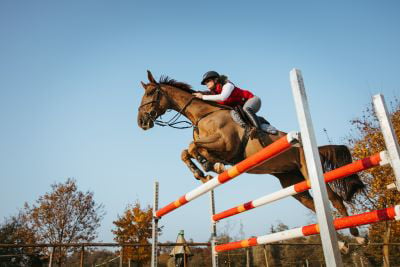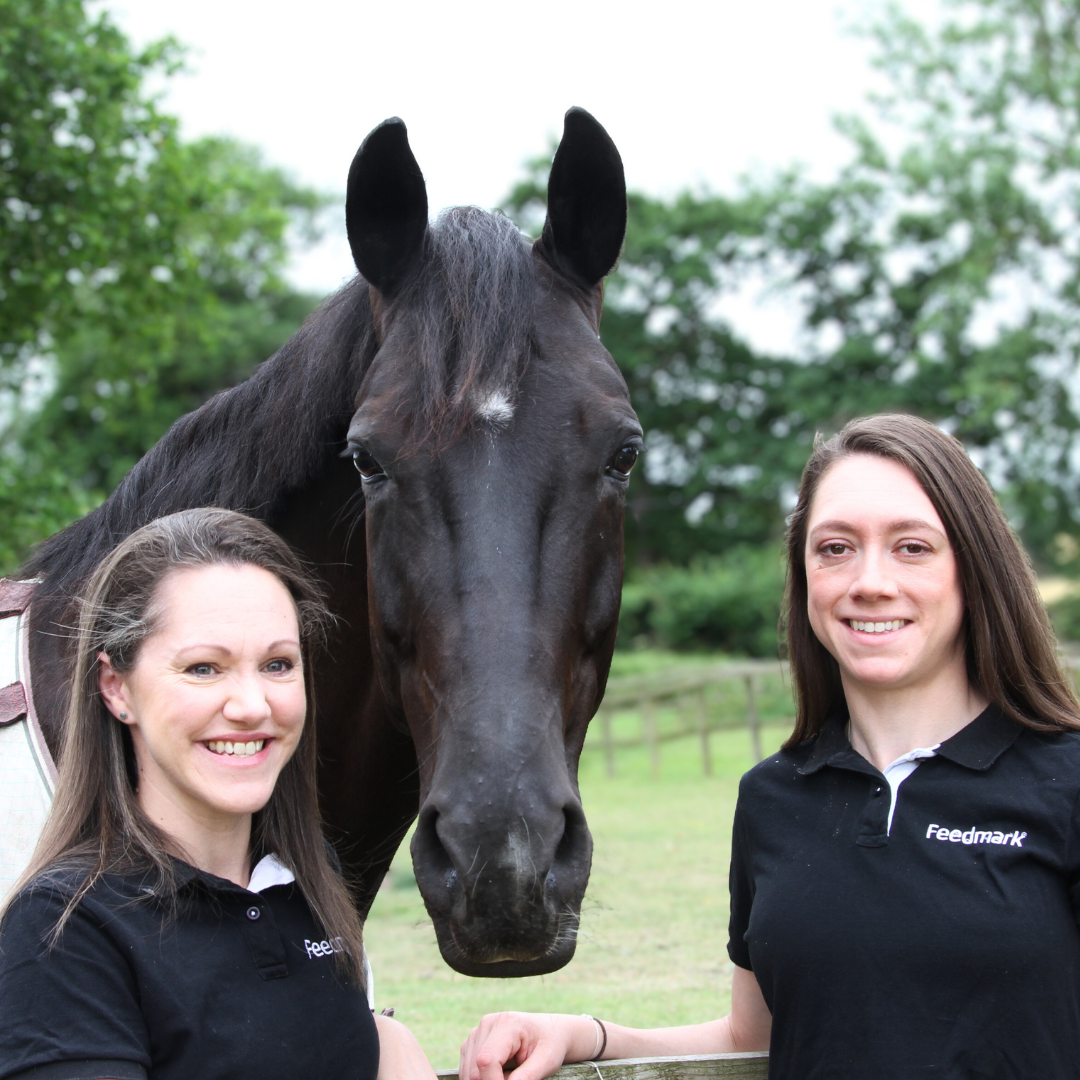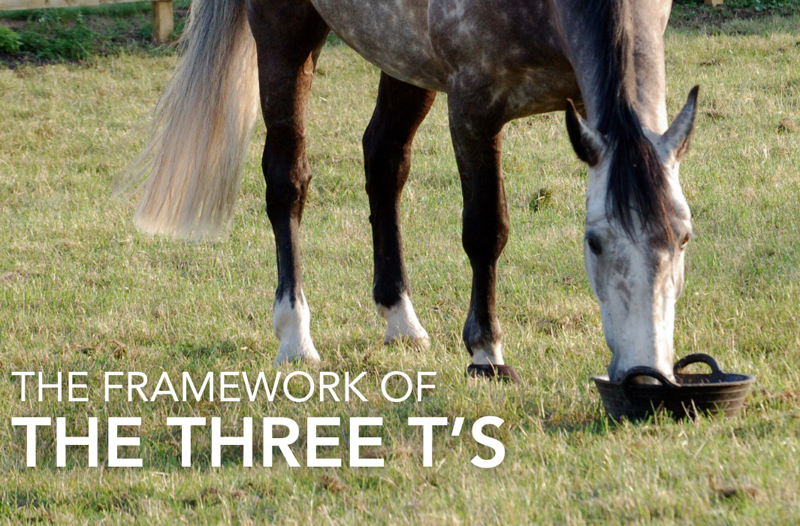When it comes to nutrition it can be so tempting to search for complex answers when, the majority of the time, it’s the main things we do consistently over time that make the biggest difference. Thinking about your horse's nutritional intake within the framework of the three T’s can help to simplify the main contributors to their diet.
The basics of good nutrition come down to three factors; Type, Timing and Total. That is to say, the type of feed, the timing of giving that feed, and the total amount of it. Thinking about feeding with those three elements in mind can really help to clarify what you’re feeding, why and how in relation to your horse’s workload and condition.
Type of feed
With so many options on the market, this is arguably the most complicated aspect of feeding. Ideally, the basis of all horse’s feed should be forage, whether that’s hay, haylage or grass, with these types of high-fibre feed contributing 1.5-2% of the horse’s body weight daily. Hard or concentrate feed can then be added into the diet depending on the condition and workload of the individual horse.

The basis of all horse’s feed should be forage
Straights
Straight feeds are defined as single ingredient feeds, which have been minimally altered and have had no other ingredients added. Common examples would be sugar beet, oats, barley, wheat or maize. Whist often dense in energy or starch (with the exception of sugar beet, which provides energy as digestible fibre) they aren’t balanced in terms of micronutrients.
Compound feeds
These contain a mixture of different ingredients, with or without added vitamins and minerals. They are often targeted to specific needs, such as performance and condition, breeding, veteran or leisure horses. Some compound feeds will also have ingredients added to help the specific type of horse they are targeted for, such as MSM and Biotin for healthy hooves or probiotics for gut health. Compound feeds are usually cereal based and fed alongside a chaff or a source of fibre to increase chewing time, and help slow down the rate at which the horse can eat them to prevent bolting or choking.
Complete feeds
Complete feeds usually contain both the compound feed and chaff together and as such form a complete feed. They would also usually have added vitamins and minerals, with some also containing probiotics and specialist ingredients in a similar way to compound feeds as described above.
Balancers
Broadly speaking, balancers fall into two categories; either pelleted or powder supplements. Pelleted balancers are often designed to be fed alone, and are ideal for horses who don’t need any other feed in which supplements could be mixed. Powdered balancers are ideal to add to straight feeds, or in instances when a horse's energetic needs don’t warrant feeding the full recommended amount of a compound or complete feed. They are a convenient way to ensure horses and ponies are receiving a broad spectrum of vitamins and minerals without excess energy or calories.
Many balancers are targeted towards specific needs, such as joint support, breeding stock, seniors, and gut health.
Good doers, those in light work or with variable workloads (for example, young horses just coming into work, those ridden a lot at weekends but not much during the week) or horses prone to fizz, often do well on a highly digestible fibre feed such as sugarbeet, rather than a cereal based feed, with a balancer added. By providing the energy source and balancer separately, the calories provided can be independently manipulated according to requirements while still providing a consistent source of micronutrients from the balancer.
Timing
Although forage in some form should be provided for the majority of the time, the timing of hard feed usually needs to be considered alongside the total amount of feed provided. If your horse needs to have a high intake of concentrate or hard feeds, these should be split into smaller feeds and timed so that they can be spaced out as much as possible during the day.
Horses, by design, are trickle feeders due to their small stomachs compared to the size of the digestive tract as a whole. Large quantities of hard feed cannot be contained within the stomach, so are pushed through to the intestines before they’ve had a chance to be adequately broken down by the stomach acid. Not only can this result in gastro-intestinal discomfort and colic, but it also means the horse is unable to properly digest and utilise all the nutrients in the feed.
For those who struggle to maintain condition or require high quantities of hard feed, giving it as several small feeds per day will mean the horse can get more out of the same total daily quantity of feed than if it were fed as one or two larger meals. Meals can then be timed around exercise, to avoid exercising within 1 hour of a hard feed.

Avoid exercising within 1 hour of a hard feed
Generally, feeds (including concentrate and chaff or other fibre) should not exceed 400g per 100kg of the horse’s bodyweight. As such, the maximum meal size for a 500kg horse would be 2kgs. Assuming roughly 400g chaff or similar, or one large Stubbs type scoop, that would leave about 1.6kgs for hard feed per meal.
Feeding little and often can also be helpful in management of ulcer-prone horses, as can timing a chaff feed for 30 minutes before exercise. A small chaff feed will encourage chewing and production of saliva to help buffer the stomach acid, as well as helping prevent splash-back of acid into the non-glandular upper portion of the stomach.
Total
The total amount of feed depends on a wide variety of factors including size and weight, workload, body condition, and even temperament as well as the type of feed and quality of hay or haylage. Whilst it is well beyond the scope of this article to discuss the total amount of feed an individual horse requires, a good starting point is to work out the total amount the horse needs to consume per day using the following equation. Remember that if your horse is turned out, grass will contribute to this intake.
Total feed required per day in kgs = Horse’s Weight (kgs) x 0.025
Please do remember that this is only a guideline, and the amount of hard feed required will depend on the energy density (MJ Digestible Energy per kg) of the feed chosen as well as the individual horse.
In summary
What, when and how to feed your horse can be very confusing and, at times, feel like an absolute minefield. This often leads us to overcomplicate matters, giving small amounts of several different types of feed potentially resulting in unbalanced micronutrient provision. By thinking of our horse’s nutrition in terms of Type, Timing and Total it can help us simplify the overall strategy and better meet our horses’ needs and goals.
|
|
Concentrate |
Forage |
|
Type |
Straights with balancer Compound mix, nuts or cubes (with balancer if not fed to recommended intake) Complete feed (with balancer if not fed to recommended intake) |
Grass Hay Haylage Forage replacer |
|
Timing |
Splitting meals throughout the day Timing feed around exercise Chaff feed before exercise |
Available for as much of the day as possible |
|
Total |
Energy density of the feed Amount required for the individual horse, condition and workload |
Based on bodyweight and relative proportion of forage to concentrate |
For any advice or questions you may have, please don't hesitate to reach out to our expert nutrition team. You can call 0800 585525 Monday-Friday 8:30am-5:00pm. Email [email protected], or send us a DM on social media.


